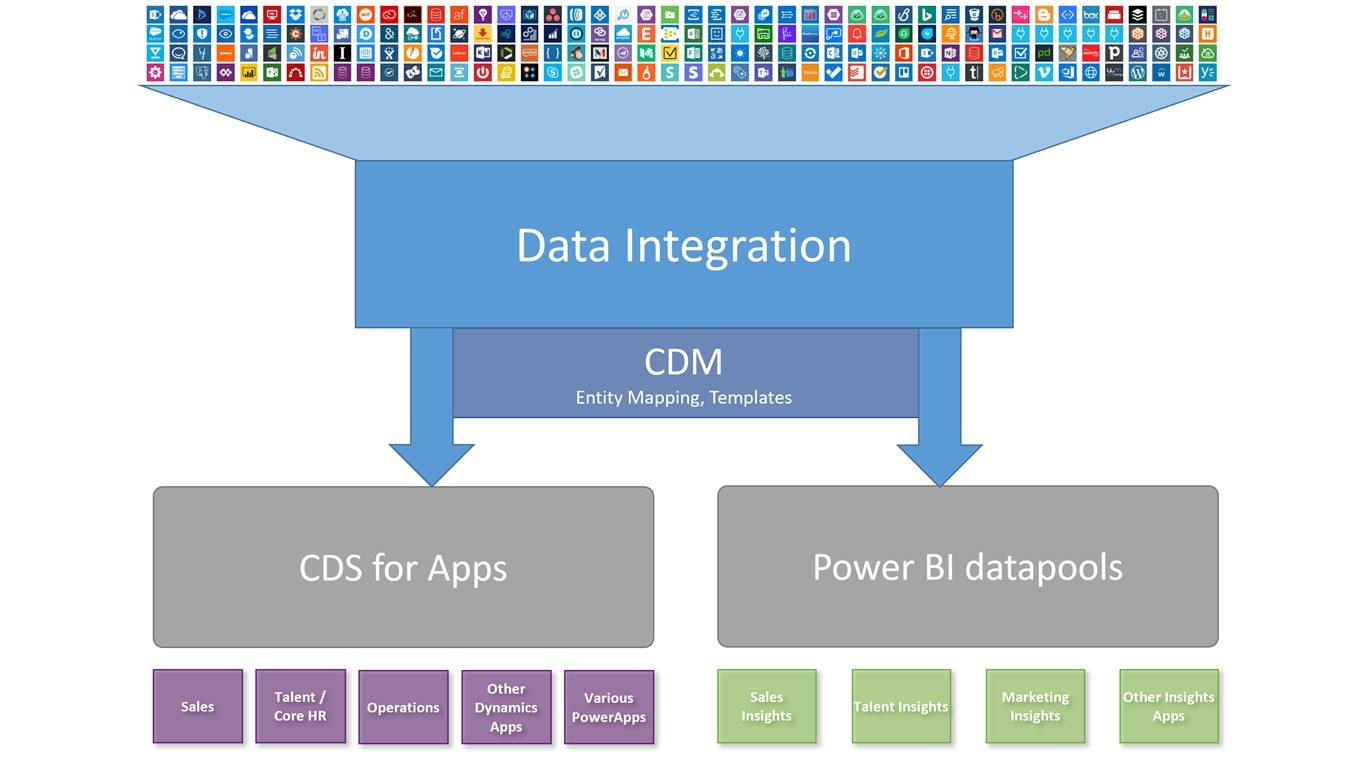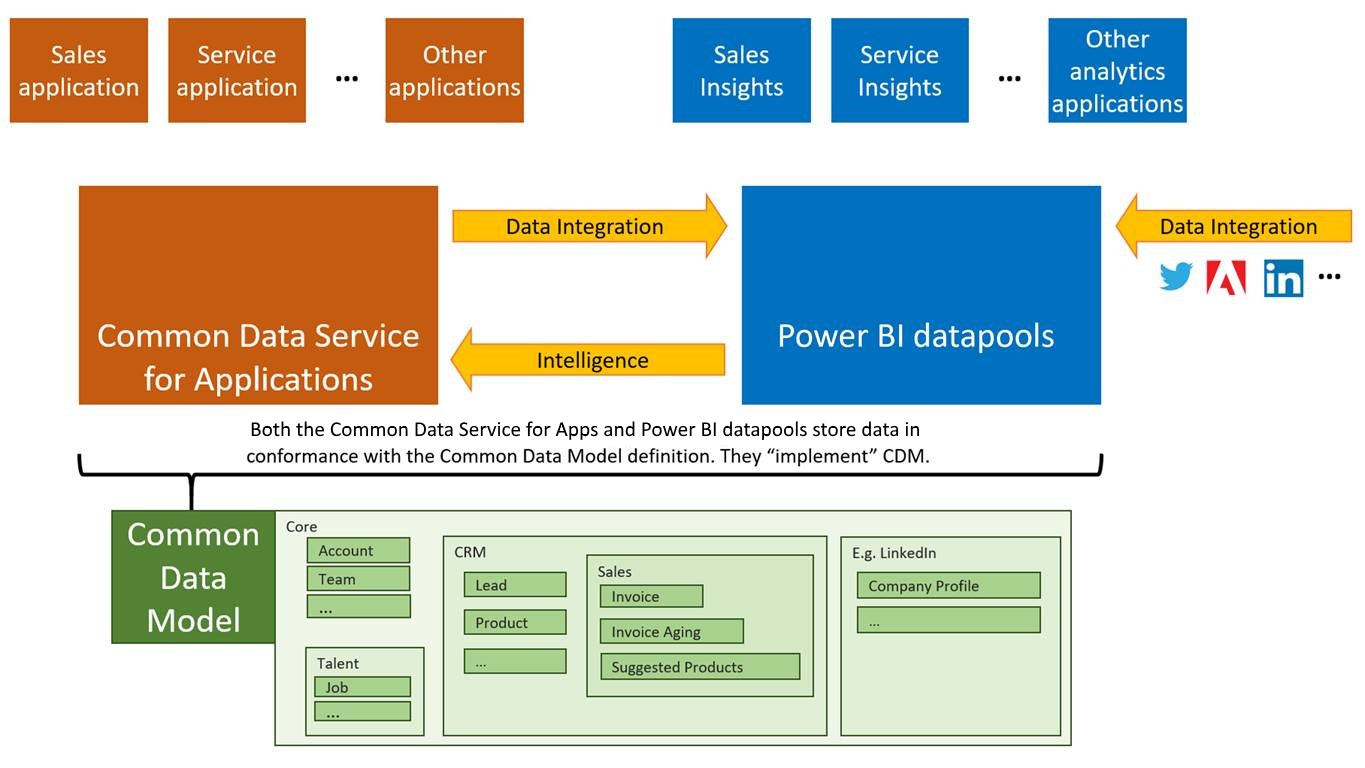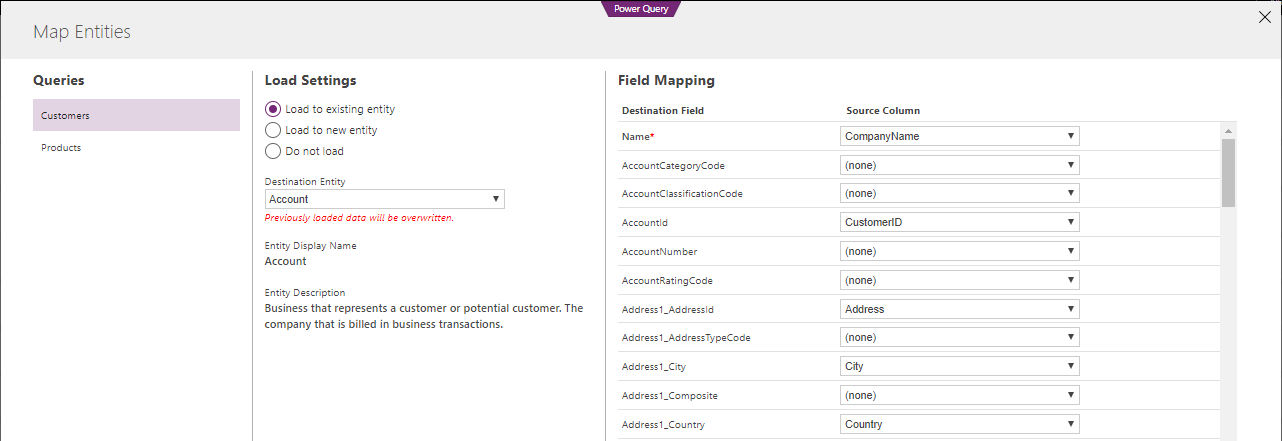Data Integration
Important
This content is archived and is not being updated. For the latest documentation, see Microsoft Dynamics 365 product documentation. For the latest release plans, see Dynamics 365 and Microsoft Power Platform release plans.
Data Integration provides the connectors and gateways that make it possible to bring any external data into the Common Data Service (CDS) and store the data in Common Data Model (CDM) form. This makes it easier for customers to integrate their data in a single place for business applications and analytics. Data Integration is based on Power Query, the same technology that millions of people use daily in Power BI and Excel. (These release notes describe functionality that may not have been released yet. Delivery timelines and projected functionality may change or may not ship (see Microsoft policy.)

Data Integration connectors
Data Integration provides direct connectivity to hundreds of business-critical data sources as well as:
Hybrid connectivity via the on-premises data gateway.
Integration into Power BI, PowerApps, Logic Apps, Microsoft Flow, Azure Analysis Services, and Office 365 (Power Query in Excel).
Common Data Model and Data Integration
The Common Data Model is an open-source definition of standard entities that represent commonly used concepts and activities across a variety of business and application domains. The Common Data Model offers well-defined, modular, and extensible business entities such as Account, Business Unit, Case, Contact, Lead, Opportunity, and Product. It also offers interactions and relationships between vendors, workers, and customers, such as activities and service level agreements.
The Common Data Service for Apps and Power BI dataflows from Microsoft implement the Common Data Model. These services hold data that conforms to the Common Data Model definition. By building on top of these services, packaged applications and analytical solutions can work with well-defined entity shapes and share data, regardless of where data originally comes from or where it’s mastered. Custom line-of-business apps and analytical solutions can take advantage of the same entities for data sharing.
Microsoft and our partners are committed to building applications on top of the Common Data Service and storing your business data in Common Data Model form. A large and growing collection of solutions “just work” when data is stored in Common Data Model form. This means you can quickly implement new business processes and gain insights into your business operations without friction or complexity.

Applications on top of the Common Data Services take advantage of Common Data Model entities
The Common Data Model simplifies the challenges of data management by unifying data in a known form that provides structural and semantic consistency across applications and deployments. It helps integrate and disambiguate data collected from business processes, digital interactions, product telemetry, people interactions, and so on.
Data stored in the Common Data Service for Apps integrates easily and automatically with Power BI dataflows, for customers who use both services. You can start from enterprise and transactional data you already own (such as leads, campaign information, and previous customer purchases) and combine it with data from other sources (such as weblogs or product telemetry) to get a unified picture.
The Common Data Model is also extensible. You can add fields to any of the customizable entities that come with the Common Data Model or create your own custom entities. The Common Data Model standard defines a common language for business entities that covers the full range of business processes across sales, service, marketing, operations, finance, talent, and commerce, and for the Customer, People, and Product entities that are at the core of a company’s business processes. The Common Data Model also facilitates data interoperability that spans multiple channels, service implementations, and vendors.
Common Data Model and the Common Data Services capabilities
Definition of standard entities - The Common Data Model provides a definition of the most commonly used entities across business and productivity applications. The public Common Data Model GitHub repository (https://github.com/Microsoft/CDM) contains the core entities that span the entire business process landscape. It will also be enhanced with additional vertical industry data models, and with cross-spanning sources such as surveys, search engines, and product telemetry.
Data integration - You can use Power Query as the built-in web experience to import and transform data from your existing systems, and to combine data from online and on-premises sources with no or little code, which means Excel and Power BI data transformation skills apply seamlessly. When you import data, you can map it to existing, standard Common Data Model entities or create and map new entities. Out-of-the-box data integration and mapping templates simplify the process of connecting to common data sources such as Salesforce.com. Mapping templates are fully customizable and extensible.

Import external data and map it to standard entities in Power Query
Extensibility - You can extend the entities without breaking data sharing with other apps.
Dependability - Because you can depend on common entities, you can build reusable components that are bound to those entities. The Common Data Model includes a design for extensibility and versioning that protects your development investment.
Entity consistency across deployments - Your solutions can connect information from productivity platforms with data from business applications. For example, you can connect a calendar appointment or a Microsoft Outlook task with a sales opportunity.
Common Data Service for Apps
The Common Data Service for Apps implements the Common Data Model, which facilitates business application development. With the Common Data Service for Apps, you can:
Take advantage of packaged business applications - Packaged applications, including Dynamics 365 for Sales, Dynamics 365 for Service, Dynamics 365 for Field Service, Dynamics 365 for Project Service Automation, Dynamics 365 for Marketing, and Dynamics 365 for Talent are built on top of the Common Data Service for Apps.
Customize applications and build native extensions for your needs - Customizers and developers can distribute application solutions with a well-defined application lifecycle. Application extensions appear as a native part of the original application.
Build no-code/low-code WYSIWYG apps with PowerApps - Use the same shared entities created or used by the packaged applications or by other third-party applications to create standalone line-of-business apps with PowerApps.
Automate business processes with Microsoft Flow - Use a business process flow to define a set of stages and steps to achieve a desired outcome.
Power BI dataflows
The upcoming Public Preview of Power BI dataflows also implements the Common Data Model, supporting business data analytics in a standardized form, including:
Packaged and customized analytical solutions that use standard data entities - Applications such as the Sales Insights add-on, which tracks historical sales performance, provide consistent insights, regardless of where the data was originally mastered, because the data integration experience maps data from other sources (Salesforce.com, for example) to Common Data Model entity shapes. This simplifies your analytical solution by focusing on the data semantics of well-defined entities such as Leads and Opportunities.
No-code/low-code Power Query data integration - Create, populate, transform, and enrich entities by using an evolved Power Query experience.
Bring your own Azure storage - Take advantage of the Azure data stack to make data available to Power BI dataflows. The entities are stored in the same Common Data Model format recognized by analytical solutions.